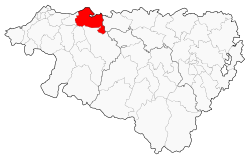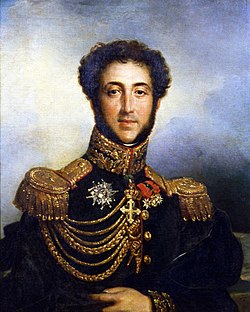
Back বিদাশ রাজ্য Bengali/Bangla Principat de Bidaxa Catalan Knížectví Bidache Czech Fürstentum Bidache German Bidache'i vürstiriik Estonian Bidaxuneko Printzerria Basque Principauté souveraine de Bidache French Бидаш (княжество) Russian
You can help expand this article with text translated from the corresponding article in French. (June 2024) Click [show] for important translation instructions.
|
Principality of Bidache | |||||||||
|---|---|---|---|---|---|---|---|---|---|
| 1570–1793 | |||||||||
 Bidache shown on a map of the modern department of Pyrénées-Atlantiques | |||||||||
| Capital | Bidache | ||||||||
| Common languages | French Occitan and anciently Basque | ||||||||
| Religion | Roman Catholicism | ||||||||
| Government | Monarchy | ||||||||
| Prince | |||||||||
• 1570–1576 | Antoine I | ||||||||
• 1576–1644 | Antoine II | ||||||||
• 1644–1678 | Antoine III, Marshal of France | ||||||||
• 1678–1720 | Antoine IV, Viceroy of Navarre | ||||||||
• 1720-1725 | Antoine V, Marshal of France | ||||||||
• 1725-1741 | Antoine VI | ||||||||
• 1741-1745 | Louis de Gramont, 6th Duke of Gramont | ||||||||
• 1745-1801 | Antoine VII (in pretense after 1793) | ||||||||
• 1801-1836 | Antoine VIII (in pretense) | ||||||||
• 1836-1855 | Antoine IX (in pretense) | ||||||||
• 1855-1880 | Antoine Alfred Agénor, (in pretense) | ||||||||
| Historical era | Renaissance | ||||||||
• Tribute last paid to king of Navarre | 1434 | ||||||||
• Established | 21 October 1570 | ||||||||
• Promulgation of Legal Code | 6 April 1575 | ||||||||
• Territory deemed a part of the French state by the King of France | 16 April 1790 | ||||||||
• Occupied by France | 1793 | ||||||||
| |||||||||
| Today part of | France | ||||||||
The Principality of Bidache was from 1570 to 1793 a small feudal state in the south west of modern-day France. The sovereignty of Bidache was proclaimed by Count Antoine de Gramont in 1570. The counts of Gramont had formerly been vassals of the King of Navarre however they had last paid tribute in 1434 and considered themselves relieved of their fealty.[1] The principality maintained de jure sovereignty until 1790 when by royal edict the territory of the principality was declared to be a part of France by Louis XVI. In 1793 the principality was occupied by troops loyal to the First French Republic and the last reigning prince, Antoine VII, was ousted. The royal and noble Gramont dynasty survives to the present day.

- ^ John Ritter and Raymond Jaurgain, House of Gramont 1040-1967, Friends of the Pyrenees Museum, Tarbes (two volumes, Volume 1, p.35, 59, 65, 69 and 71.
